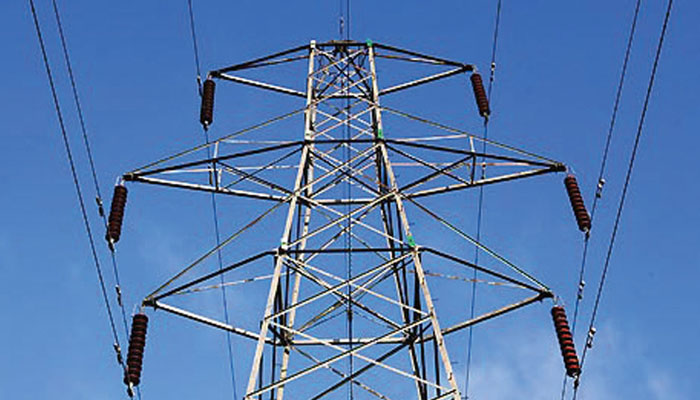Electricity demand in Pakistan to soar by 48 percent in next decade, study says
Pakistan may have to build expensive and inefficient power plants worth billions of dollars to meet its growing electricity needs, a power sector study indicated
KARACHI: Pakistan may have to build expensive and inefficient power plants worth billions of dollars to meet its growing electricity needs, a power sector study indicated.
The study projected that Pakistan's electricity demand will increase by 48 percent in the next decade, from 154 terawatt-hours (27GW peak) in fiscal year 2022 to 228 TWh (39GW peak) in fiscal year 2031.
“To meet the escalating demand for electricity, Pakistan must construct and connect additional power to the national grid. Moreover, the existing power plants pose a financial burden due to their high operational costs, necessitating their displacement with cheaper power sources,” the latest study ‘Powering Pakistan’ conducted by the Policy Research Institute for Equitable Development (PRIED) and Renewables First said.
The report pointed out that the Indicative Generation Capacity Expansion Plan (IGCEP) not only determines the power plants that must be built, it also outlines their respective timelines.
The IGCEP is a comprehensive planning document prepared annually by the National Transmission Despatch Company (NTDC) and approved by the National Electric Power Regularity Authority (NEPRA). The latest approved IGCEP specifies that approximately 30GW of new power plants will be constructed and integrated into the national grid over the next decade.
This ambitious endeavour demands a substantial investment, estimated at around $40 billion. Effective planning plays a crucial role in ensuring the success of this undertaking and can yield significant benefits.
The study noted that IGCEP imposes some arbitrary and unexplained constraints on candidate RE projects that lead to a lower share of wind and solar technologies in the national grid.
When these constraints, apart from the 2-year lead time, were removed, a further addition of 11GW of wind and solar capacity was recommended by the model. “This demonstrates a least cost potential of a total of 39GW (equivalent to a 47 percent share of RE) in the national grid by 2031,” it showed.
The report mentioned that the total cost savings expected in the 10-year horizon for this scenario are nearly $10 billion, which however will also continue to result in massive savings in fuel costs after the 10 years period, nearing $180 million each year.
In the power sector of Pakistan, there are a total of nine thermal power plants (three in NTDC and three in KE, constituting a total of 5,776MW) that have been guaranteed minimum power off-takes between 50-75 percent due to fuel contracts and supply constraints.
Pakistan faces the risk of constructing expensive and inefficient power plants worth billions of dollars. The burden of these careless decisions will inevitably fall on the shoulders of the people of Pakistan, who will be bound to pay these costs for years to come. Lack of transparency in the power planning process results not only in expensive fuel prices for electricity generation, but also contributes to the ongoing problem of circular debt, which continues to escalate. For decades now, power plants have been built without proper planning. While NTDC was mandated by the grid code to come up with a generation plan back in 2005, it failed to do so for 15 years. As a result, Pakistan is now burdened with costly plants and commitments which people are struggling to pay for, the report pointed out.
In 2022 alone, Pakistanis paid Rs41 billion for partial load adjustment charges resulting from the underutilisation of thermal power plants (with only 46 percent utilization) and Rs721 billion in capacity payments, the report added.
In the energy sector of Pakistan, there is a major challenge involved in availability and transparency of data. While some information is available through the State of Industry Reports, Tariff Determinations, and Generation Licenses, its extraction remains a laborious task. Many documents are provided in the form of old images and non-copy able formats. There is plenty of missing and inconsistent information.
The report stated that renewable energy has become the cheapest source of electricity globally, now competing with coal which has historically been the cheapest source of power generation. Over the past decade, the market for renewables has seen a sharp drop in prices and recommended that a lot more wind and solar energy technologies must be added to the national grid in a systematic manner over the next decade, with special emphasis on small-scale and local investment alongside modular approaches to local manufacturing to ensure the strengthening of local markets.
Wind and solar energy must be added to the national grid not only because it is green, but because it is by far the cheapest. It is also more reliable compared to electricity from imported fuels which are constantly subjected to global fluctuations, the report mentioned.
-
 First Poll Since King Charles' Action Against Andrew Reveals Royal Family's Public Standing
First Poll Since King Charles' Action Against Andrew Reveals Royal Family's Public Standing -
 Blake Lively Strengthens Legal Team Ahead Of Justin Baldoni Trial
Blake Lively Strengthens Legal Team Ahead Of Justin Baldoni Trial -
 'Back To School!': Palace Shares Details Of Princess Anne's Latest Engagements
'Back To School!': Palace Shares Details Of Princess Anne's Latest Engagements -
 Paul Mescal Clarifies Acting Break Comment As He Teases Paul McCartney Role
Paul Mescal Clarifies Acting Break Comment As He Teases Paul McCartney Role -
 Kate Middleton's Unexpected Style Of Arrival At Solo Outing Goes Viral
Kate Middleton's Unexpected Style Of Arrival At Solo Outing Goes Viral -
 Why ‘X’ Is Down? Thousands Report Twitter Outage: Here’s What You Can Do
Why ‘X’ Is Down? Thousands Report Twitter Outage: Here’s What You Can Do -
 Florida Man Held After Alleged Nail-scattering On Busy Intersections
Florida Man Held After Alleged Nail-scattering On Busy Intersections -
 Valeria Nicov: Sean Penn's Athletic Girlfriend Raises Eyebrows With Latest Photos
Valeria Nicov: Sean Penn's Athletic Girlfriend Raises Eyebrows With Latest Photos -
 Sharon Stone Lashes Out At Fellow Award Show Attendees After Stealing Accusations
Sharon Stone Lashes Out At Fellow Award Show Attendees After Stealing Accusations -
 Gwyneth Paltrow Reveals Real Reason She Said Yes To 'Marty Supreme'
Gwyneth Paltrow Reveals Real Reason She Said Yes To 'Marty Supreme' -
 King Charles Says He And Queen Camilla Stand With People Of Ukraine
King Charles Says He And Queen Camilla Stand With People Of Ukraine -
 Ben Affleck Argues In Favour Of His Shirtless Scene In 'The Rip'
Ben Affleck Argues In Favour Of His Shirtless Scene In 'The Rip' -
 Mississippi Postal Worker Arrested After Complaints Of Marijuana Odour In Letters
Mississippi Postal Worker Arrested After Complaints Of Marijuana Odour In Letters -
 Canada, China Lock Initial Trade Deal On ‘EV,Canola’ To Strengthen Ties: What To Expect Next?
Canada, China Lock Initial Trade Deal On ‘EV,Canola’ To Strengthen Ties: What To Expect Next? -
 Melissa Leo On Euphoria Of Winning An Oscar Vs It's Impact On Career
Melissa Leo On Euphoria Of Winning An Oscar Vs It's Impact On Career -
 Meghan Markle, Prince Harry Express 'hope' In Latest Major Statement
Meghan Markle, Prince Harry Express 'hope' In Latest Major Statement




